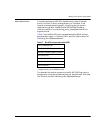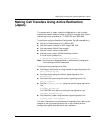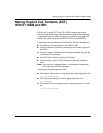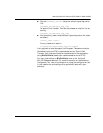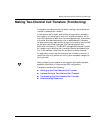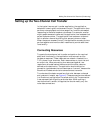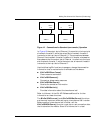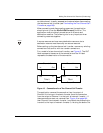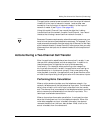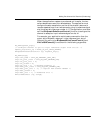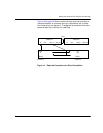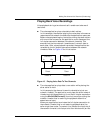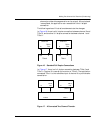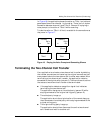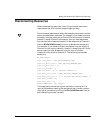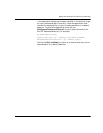
Making Two-Channel Call Transfers (Tromboning)
November 2009 194
The application created a new connection from the output of network
timeslot 0 to the input of network timeslot 1 and another new
connection from the output of network timeslot 1 to the input of
network timeslot 0 (see Figure 13 on page 193).
Using this model, Channel 0 can record the data that is being
transmitted from the network timeslot 0 and Channel 1 can record
the data that is being transmitted from network timeslot 1.
Because of firmware requirements, when disconnecting resources, you
have to invert the source and destination resources. For example, if you
made a transmit connection from the output slot of Channel
0 to the input
slot of network timeslot
0, where Channel 0 is the source, then you must
disconnect from the input slot of network timeslot
0 to the output slot of
Channel
0.
Actions During a Two-Channel Call Transfer
After the application establishes a two-channel call transfer, it can
then perform voice playback and voice recognition. In addition to
these voice actions, the application must provide secondary
functionality. For example, when performing voice recognition
during a two-channel call transfer, the application must configure
echo cancellation in the channel correctly. Also, when performing
voice playback to a caller, the application must place the other caller
on hold to avoid providing the original caller with two source inputs.
Performing Echo Cancellation
When a caller sends voice data over the telephone network, the
network reflects some of that data back as input data. The reflected
data is then mixed in with valid input voice data from the remote
end. The channel that is connected to the telephone network must be
able to remove the reflected data from the valid input data. This
technique is called echo cancellation.
When a channel performs echo cancellation, it analyzes the voice
data that is being sent out into the telephone network. When this
voice data reappears as input voice data (the echo), the channel
removes the data from the input data stream. What is left is the
actual voice data from the remote end.



